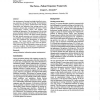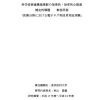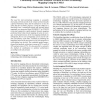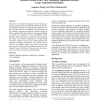MEDINFO
2007
14 years 26 days ago
2007
Managing time-stamped data is essential to clinical research activities and often requires the use of considerable domain knowledge, which is difficult to support within database ...
MEDINFO
2007
14 years 26 days ago
2007
MEDINFO
2007
14 years 26 days ago
2007
MEDINFO
2007
14 years 26 days ago
2007
The need for inter-terminology mapping is constantly increasing with the growth in the volume of electronically captured biomedical data and the demand to re-use the same data for...
MEDINFO
2007
14 years 26 days ago
2007
The nature of the internet as a non-peer-reviewed (and more generally largely unregulated) publication medium has allowed wide-spread promotion of inaccurate and unproven medical ...
MEDINFO
2007
14 years 26 days ago
2007
Objective: To apply and compare common machine learning techniques with an expert-built Bayesian Network to determine eligibility for asthma guidelines in pediatric emergency depa...
MEDINFO
2007
14 years 26 days ago
2007
Objectives: To compare the alignments of two large anatomical ontologies (the Foundational Model of Anatomy and GALEN) produced by three ontology alignment systems (AOAS, FALCON a...
MEDINFO
2007
14 years 26 days ago
2007
Temporal constraints play a fundamental role in clinical guidelines. For example, temporal indeterminacy, constraints about duration, delays between actions and periodic repetitio...
MEDINFO
2007
14 years 26 days ago
2007
In 2005, a major collaboration in Melbourne Australia successfully completed implementing a major medical informatics infrastructure – this is now being used for discovery resear...
MEDINFO
2007
14 years 26 days ago
2007
Reuse of ontologies is important for achieving better interoperability among health systems and relieving knowledge engineers from the burden of developing ontologies from scratch...




